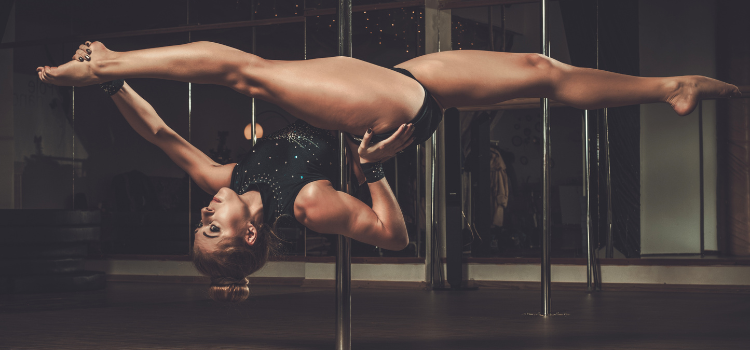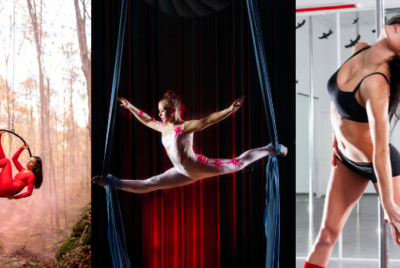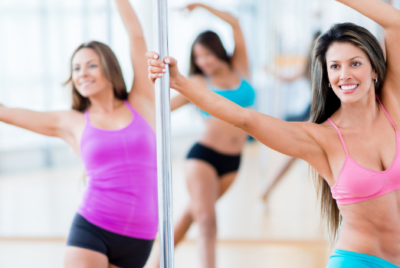Pole Dancing: Embrace the Strength and Grace
Introduction
As a passionate pole dancing enthusiast and advisor, I am excited to share the wonders of this art form with you. Pole dancing has transformed my life, both physically and emotionally, and I want to guide you on a journey to discover the joy, strength, and grace that pole dancing can bring. In this article, we will explore the numerous benefits, provide tips for beginners, offer advice on choosing the right pole, discuss safety precautions, and much more. So, let’s dive in and uncover the world of pole dancing together!
Benefits of Pole Dancing
Physical Health Benefits
Pole dancing is a fantastic way to enhance your physical fitness. It combines strength, flexibility, and cardiovascular exercise, resulting in a full-body workout. The dynamic movements engage various muscle groups, including your arms, core, legs, and back. By incorporating pole dancing into your fitness routine, you can build lean muscle, improve your posture, increase your stamina, and enhance your overall body strength.
Mental and Emotional Benefits
Beyond the physical aspects, pole dancing offers incredible mental and emotional benefits. The challenging nature of the sport helps to boost your self-esteem and self-confidence. As you conquer new moves and witness your progress, you’ll experience a sense of accomplishment that transcends into other areas of your life. Pole dancing also acts as a stress reliever, allowing you to express yourself creatively, improve body awareness, and cultivate mindfulness.
Empowerment and Self-Confidence
One of the most profound transformations that pole dancing brings is the empowerment it instills within individuals. You learn to embrace and celebrate your body’s strength and sensuality. It helps break free from societal stereotypes and allows you to reclaim your personal power. As you conquer challenging moves and push your boundaries, you’ll develop a newfound sense of self-confidence that extends beyond the pole.
Choosing the Right Pole
When it comes to pole dancing, selecting the right pole is crucial for a safe and enjoyable experience. There are different types of poles available, including static and spinning poles, as well as portable options for home use. Consider the following factors when choosing a pole:
Stability and Grip: Look for a pole that offers stability and a secure grip. Opt for poles with high-quality materials and sturdy construction to ensure safety during your routines.
Installation: Determine whether you need a permanent or removable pole. If you’re setting up a pole at home, make sure it can be securely installed in your chosen space without causing damage.
Pole Diameter: Consider the diameter of the pole that suits your grip strength and comfort level. Thicker poles provide a more secure grip, while thinner poles are better for smaller hands.
Finish: Choose a pole with a suitable finish, such as chrome, stainless steel, or brass. Each finish has its own level of grip and aesthetic appeal, so pick one that aligns with your preferences.
Safety Precautions
Safety should always be a top priority. By following these safety precautions, you can minimise the risk of injuries and enjoy a worry-free experience:
Warm-Up and Stretching: Always warm up your body with dynamic exercises and perform stretching routines before starting your pole dancing session. This helps prepare your muscles and prevents strains or sprains.
Proper Grip and Hand Care: Ensure your hands are clean and dry before gripping the pole. Use grip aids, such as grip powders or grip-enhancing products, to maintain a secure grip and prevent slips. Additionally, take care of your hands by moisturising and exfoliating them regularly.
Move Execution: Pay close attention to proper technique and form when executing pole dancing moves. Gradually progress from simpler moves to more advanced ones, ensuring you have the strength and control to perform them safely.
Spotter or Crash Mat: If you’re attempting more challenging moves or inversions, consider having a spotter present or using a crash mat for added safety. These precautions provide an extra layer of protection in case of a fall.
Beginner’s Guide to Pole Dancing
If you’re new to pole dancing, here’s a beginner’s guide to help you get started:
- Familiarise Yourself with the Pole: Begin by getting comfortable with the pole itself. Stand beside it and practice gripping it with both hands at different heights to develop your grip strength.
- Basic Pole Holds and Spins: Learn foundational moves like the basic pole hold and spins. These moves build your strength and coordination while allowing you to become accustomed to the sensation of spinning around the pole.
- Pole Climbing: Practice pole climbing, which involves using your arms and legs to ascend the pole. Start with small climbs and gradually work your way up to more extended climbs as your strength improves.
- Simple Inversions: As you gain confidence and strength, progress to simple inversions, such as the basic invert or the thigh hold. Remember to engage your core and use proper technique to maintain control during the inversion.
- Floor Work and Transitions: Explore floor work and transitions between moves. These fluid movements on the floor add an artistic element to your routines and help you develop a sense of flow and grace.
Remember, it’s essential to start slow and listen to your body. Take breaks when needed, and don’t push yourself beyond your limits. This is a journey, and with consistent practice, you’ll continue to improve and expand your repertoire of moves.
Developing Strength and Flexibility
Strength and flexibility are key components of pole dancing. Here are some tips to help you develop these essential attributes:
- Strength Training: Incorporate strength training exercises into your routine to build the necessary upper body and core strength. Exercises like push-ups, pull-ups, planks, and squats can help target specific muscle groups and enhance your overall strength.
- Pole-Specific Exercises: Engage in pole-specific exercises that target the muscles used in pole dancing. Moves like pole sits, pole pulls, and leg hangs help strengthen your grip, arms, and core. Practice these exercises regularly to improve your pole performance.
- Flexibility Training: Flexibility is vital in pole dancing for executing fluid and graceful movements. Incorporate stretching exercises into your routine to improve your flexibility. Focus on stretching your hamstrings, shoulders, back, and hips. Yoga or Pilates can also complement your pole dancing training by enhancing flexibility and body awareness.
- Conditioning Workouts: Perform conditioning workouts that combine cardiovascular exercises with strength and endurance training. This will help improve your stamina, cardiovascular fitness, and overall body conditioning.
- Rest and Recovery: Allow your body sufficient time to rest and recover. Pole dancing can be physically demanding, and adequate rest is crucial for muscle repair and growth. Listen to your body and take rest days as needed to prevent overexertion and avoid injuries.
By consistently incorporating strength and flexibility training into your practice, you’ll gradually witness improvements in your abilities. Remember to always warm up before engaging in intense workouts and to cool down afterward to prevent muscle soreness and injury.
Progression and Advancement
Pole dancing is an art form that offers endless possibilities for progression and advancement. Here are some tips to help you advance in your pole dancing journey:
- Set Goals: Set realistic and achievable goals to keep yourself motivated and focused. Whether it’s mastering a specific move, improving your flexibility, or participating in a pole dancing competition, having clear goals will give you a sense of purpose and drive.
- Practice Regularly: Consistency is key when it comes to pole dancing. Dedicate regular practice sessions to refine your skills and build your strength. Even short practice sessions a few times a week can make a significant difference in your progress.
- Attend Workshops and Classes: Take advantage of workshops and classes offered by experienced pole dancers. These sessions provide opportunities to learn new techniques, explore different styles, and receive guidance from professionals. Engaging with the pole dancing community can also be a source of inspiration and support.
- Explore Freestyle and Choreography: Move beyond learning individual moves and explore the art of freestyle and choreography. Experiment with different combinations of moves, transitions, and music to express your creativity and develop your unique style.
- Embrace Challenges: Don’t shy away from challenging yourself. Push beyond your comfort zone and attempt moves that seem difficult. With practice and perseverance, you’ll surprise yourself with what you can achieve.
Remember, this is a personal journey, and everyone progresses at their own pace. Embrace the process and celebrate your achievements along the way. Enjoy the beauty of your own unique journey and the growth you experience as a pole dancer.
Finding a Pole Dancing Community
Joining a pole dancing community can greatly enhance your pole dancing experience. Here’s how you can find a supportive community:
- Local Studios: Research local dance studios in your area. Attend classes and workshops offered by these studios to connect with fellow pole dancers and experienced instructors. Studios often have a welcoming and supportive atmosphere that fosters growth and camaraderie.
- Online Communities: Engage with online pole dancing communities through social media platforms, forums, and dedicated websites. These communities allow you to connect with pole dancers from around the world, share experiences, seek advice, and stay up-to-date with the latest trends and techniques.
- Pole Dancing Events: Keep an eye out for pole dancing events, competitions, and showcases happening in your region. Participating in or attending these events provides an excellent opportunity to meet like-minded individuals, watch inspiring performances, and immerse yourself in the vibrant pole dancing community.
- Workshops and Retreats: Consider attending pole workshops or retreats led by renowned pole dancers. These intensive sessions not only offer valuable training but also allow you to connect with fellow participants who share your passion for the pole.
- Online Classes: In addition to in-person communities, online pole classes have gained popularity. Explore online platforms that offer virtual classes and tutorials taught by experienced instructors. These classes provide convenience and flexibility while still fostering a sense of community through virtual interactions.
Building relationships within the community can provide invaluable support, encouragement, and inspiration. Surrounding yourself with individuals who share your enthusiasm can elevate your pole dancing journey and create lifelong friendships.
Overcoming Challenges and Stereotypes
As a pole dancer, you may encounter challenges and face societal stereotypes. Here’s how to overcome them:
- Self-Belief and Confidence: Believe in yourself and your abilities as a pole dancer. Embrace your uniqueness and the journey you’re on. Cultivate self-confidence and let go of any self-doubt or external judgments.
- Education and Advocacy: Educate others about the artistry and athleticism of pole dancing. Challenge misconceptions and stereotypes by sharing the physical and mental benefits, as well as the dedication and skill required in this art form.
- Supportive Network: Surround yourself with a supportive network of friends, family, and fellow pole dancers who appreciate and understand your passion. Lean on them for encouragement and advice when faced with challenges.
- Focus on Personal Growth: Instead of dwelling on negativity or criticism, channel your energy into personal growth and self-improvement. Set your own goals and focus on your progress, celebrating your achievements along the way.
- Share Your Journey: Share your pole dancing journey with others through social media, blogs, or personal conversations. By showcasing your dedication, progress, and the joy you find in pole dancing, you can inspire others and challenge stereotypes.
Remember, pole dancing is an empowering and liberating art form. Embrace the challenges as opportunities for growth, break free from societal norms, and redefine the perception of pole dancing.
Conclusion
Pole dancing is a captivating and transformative practice that offers a plethora of physical, mental, and emotional benefits. Through pole dancing, you can enhance your strength, flexibility, and overall fitness while gaining self-confidence and empowerment. Remember to choose the right pole, prioritise safety, and gradually progress through beginner moves to more advanced techniques. Joining a supportive community, overcoming challenges, and challenging stereotypes are integral parts of the pole dancing journey. Embrace the joy, self-expression, and artistry that pole dancing brings into your life and continue to push your boundaries. So, grab that pole, find your rhythm, and let the beauty of pole dancing unfold before you.




